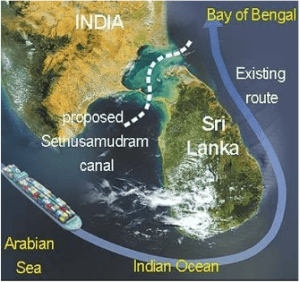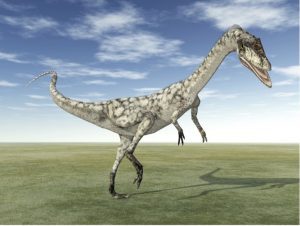ECONOMIC DEVELOPMENTS
1. WHAT IS BASE EFFECT?
TAGS: PRELIMS PERSPECTIVE- GS-III-INDIAN ECONOMY
THE CONTEXT: According to revised estimates, India’s industrial output measured in terms of Index of Industrial Production (IIP) bounced back to rise 7.1% in November 2022, after plummeting 4.2% in October 2022 and this rise was aided by base effects.
THE EXPLANATION:
The rise was aided by base effects as November 2021 had clocked just 1% growth, but also marked a 6% uptick in output levels over October 22, which incidentally recorded the lowest level for the Index of Industrial Production (IIP) since November 2021.
What is a Base Effect?
- The base effect is the impact that selecting a different reference point for a comparison between two data points can have on the comparison’s outcome.
- For Eg: In the context of inflation, the base effect is a distortion in a current inflation figure caused by exceptionally high or low levels of inflation in the previous reference period.
- If the inflation rate was low in the corresponding period of the last year, then even a small increase in the price index will give a high rate of inflation in the current year.
- When comparing two data points, choosing a reference point will be crucial as the base effect can highly distort or mislead the interpretation of numbers.
- The base effect could also result in major differences in percentage comparisons. If we chose a reference point that is too low, there could be an overestimation and if the base is too high, it could result in gross underestimation of the situation.
VALUE ADDITION:
Index of Industrial Production (IIP)?
- The Index of Industrial Production (IIP) is an index which shows the growth rates in different industry groups of the economy in a stipulated period of time.
- Who publishes IIP? The IIP index is computed and published by the Central Statistical Organisation (CSO) under the Ministry of Statistics and Programme Implementation on a monthly basis.
- Currently IIP figures are calculated considering 2004-05 as base year.
ENVIRONMENT, ECOLOGY AND CLIMATE CHANGE
2. INDIAN SKIMMERS
TAGS: PRELIMS PERSPECTIVE-GS-III- ENVIRONMENT- SPECIES IN NEWS
THE CONTEXT: Recently around 250 Indian Skimmers were sighted in Coringa Wildlife Sanctuary in a day during the Asian Waterbird Census-2023.
THE EXPLANATION:
About Indian Skimmers:
- It is found in the coastal estuaries of western and eastern India.
- It occurs primarily on larger, sandy, lowland rivers, around lakes and adjacent marshes and, in the non-bre
 eding season, in estuaries and coasts.
eding season, in estuaries and coasts. - About 20% of the total population of fewer than 2,500 birds nest along river Chambal.
- Protection status:
- IUCN: Endangered
About the Coringa Wildlife Sanctuary:
- It is a wildlife sanctuary and estuary situated in Andhra Pradesh.
- Between this sanctuary area and the sea Hope Island blocks the direct confluence of the sea and Godavari. As a result, about 40% of the sanctuary is only sea backwaters and the rest of the area is intermingled with creeks and gets inundated with tidal waters.
- Flora: It has extensive mangrove and dry deciduous tropical forests. It is the second-largest stretch of mangrove forests in India.
- Fauna: It is home to the critically endangered white-backed vulture and the long-billed vulture.
3. SETHUSAMUDRAM PROJECT
TAGS: PRELIMS PERSPECTIVE-GS-III-INFRASTRUCTURE
THE CONTEXT: The Tamil Nadu Chief Minister has recently moved a resolution in the state assembly seeking the revival of the Sethusamudram Project, a proposed shipping canal project in India that would connect the Gulf of Mannar and the Palk Strait.
THE EXPLANATION:
- The project, which has been controversial since its inception, was put on hold by the Government of India in 2007.
- The Sethusamudram Project aims to construct a shipping canal through the shallow waters of the Palk Bay and the Gulf of Mannar, which would reduce the distance and time required for ships to travel between the east and west coasts of India. The project would bypass the traditional shipping route through the Palk Strait, which is considered a navigational hazard.
Controversies
The Sethusamudram Project has been met with opposition from various groups, who raise concerns about its potential impact on the environment, the Ram Setu, and its economic viability.
- Environmental impact: Critics argue that the construction of the canal would cause significant damage to the marine ecosystem of the Palk Bay and the Gulf of Mannar. They claim that the dredging and blasting required for the construction of the canal would harm the coral reefs and other marine life in the area.
- Damage to Ram Setu: Some Hindus consider Ram Setu to be sacred and believe that the bridge was built by Lord Rama himself. They argue that the construction of the canal would cause damage to the bridg
 e and desecrate a religious site.
e and desecrate a religious site. - Economic viability: Critics question the economic viability of the project, arguing that the cost of construction would be high and the benefits would be limited. They say that the canal would not be able to accommodate large ships and would not offer a significant reduction in the distance travelled by ships, compared to the existing route through the Palk Strait.
- Technical feasibility: There are also concerns about the technical feasibility of the project, with critics arguing that the canal would not be able to handle the large tidal differences and would be susceptible to silting and other issues.
- Political and legal disputes: The project has been on hold since 2007 following a legal dispute involving the Indian government and the opposition party, which challenged the project on the grounds that it would cause damage to the Ram Setu.
- Security: Critics also argue that the project would increase the security risk for India, as it would provide an opening for foreign ships to enter into the Bay of Bengal, making it easier for hostile forces to attack India’s eastern coast.
VALUE ADDITION:
What is Ram Setu?
Ram Setu, also known as Adam’s Bridge, is a chain of limestone shoalsthat runs between the Indian mainland and Sri Lanka. According to Hindu mythology, the bridge was built by the monkey-god Hanuman and his army to help Lord Rama, an incarnation of the god Vishnu, rescue his wife Sita from the demon king Ravana, who had abducted her and taken her to Lanka. The bridge is considered sacred by Hindus and is believed to be the physical manifestation of a bridge mentioned in the ancient Indian epic, the Ramayana.
PRELIMS PERSPECTIVE
4. THIS WORD MEANS: MEGARAPTOR
TAGS: PRELIMS PERSPECTIVE
THE CONTEXT: Recently, Scientists have found the remains of four species of dinosaurs, including a megaraptor, in an inhospitable valley in Chilean Patagonia for the first time.
THE EXPLANATION:
- Megaraptorid was a large theropod of the Cretaceous Period, 84 to 65 mya.
- Megaraptors possessed strong arms that wielded sickle-like claws that could inflict fatal wounds on prey, along with a more lightly built skull and jaws studded with smaller teeth.
- They also had air-filled, bird-like bones.
- Megaraptor was about 25–26 feet (7.5–8 meters) long.
- Incomplete Megaraptor remains were found in 1996 in Northwest Patagonia, Argentina, by paleontologist Fernando E. Novas. Novas named it in 1998.
Cretaceous Period:
- The Cretaceous Period, in geologic time, is the last of the three periods of the Mesozoic Era.
- The Cretaceous began 145.0 million years ago and ended 66 million years ago.
- It followed the Jurassic Period and was succeeded by the Paleogene Period.
What is a Theropod?
- This group includes all the known carnivorous dinosaurs as well as the birds.
- They have a carnivorous dentition and large, recurved claws on the fingers.
- They have a distinctive joint in the lower jaw.
Patagonian Region:
- It is a sparsely populated region located at the southern end of South America, shared by Argentina and Chile.
- The region comprises the southern section of the Andes mountains as well as the deserts, steppes and grasslands east of this southern portion of the Andes.
- Patagonia has two coasts; a western one towards the Pacific Ocean and an eastern one towards the Atlantic Ocean.
5. WHAT IS VISCOSE FIBRE?
TAGS: PRELIMS PERSPECTIVE
THE CONTEXT: Recently, the Association of Man-made Fibre Industry of India (AMFII) has appealed to the Union Finance Ministry to accept the recommendations of the Directorate General of Trade Remedies (DGTR) on the levy of anti-dumping duty (ADD) on imports of Viscose Staple Fibre from Indonesia.
THE EXPLANATION:
- Viscose is a type of rayon. Originally known as artificial silk, in the late 19th century, the term “rayon” came into effect in 1924.

- The name “viscose” is derived from the way this fibre is manufactured; a viscous organic liquid used to make both rayon and cellophane.
- Viscose is made from tree wood pulp, like beech, pine, and eucalyptus, but can also be made from bamboo
- As a manufactured regenerated cellulose fibre, it is neither truly natural (like cotton, wool or silk) nor truly synthetic (like nylon or polyester) – it falls somewhere in between.
- Chemically, viscose resembles cotton, but it can also take on many different qualities depending on how it is manufactured.
- It is versatile, Highly absorbent and Inexpensive fibre.

 e and desecrate a religious site.
e and desecrate a religious site.

